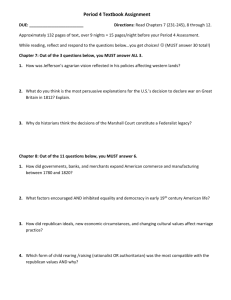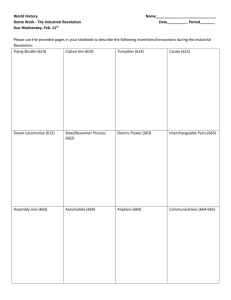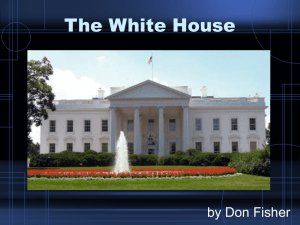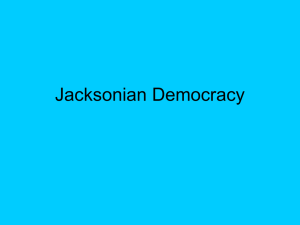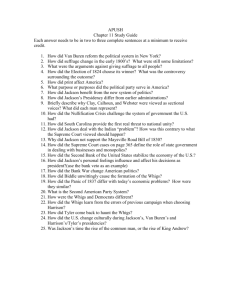AP US History Name: Unit Plan PERIOD 4: 1800–1848 The new
advertisement
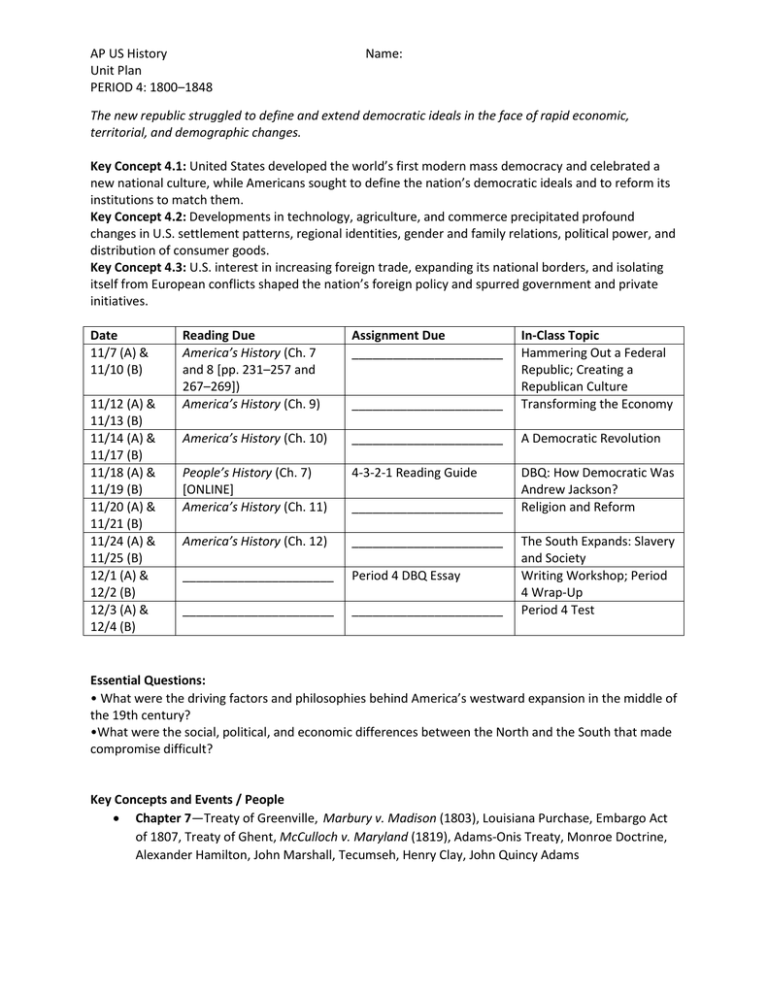
AP US History Unit Plan PERIOD 4: 1800–1848 Name: The new republic struggled to define and extend democratic ideals in the face of rapid economic, territorial, and demographic changes. Key Concept 4.1: United States developed the world’s first modern mass democracy and celebrated a new national culture, while Americans sought to define the nation’s democratic ideals and to reform its institutions to match them. Key Concept 4.2: Developments in technology, agriculture, and commerce precipitated profound changes in U.S. settlement patterns, regional identities, gender and family relations, political power, and distribution of consumer goods. Key Concept 4.3: U.S. interest in increasing foreign trade, expanding its national borders, and isolating itself from European conflicts shaped the nation’s foreign policy and spurred government and private initiatives. Date 11/7 (A) & 11/10 (B) 11/12 (A) & 11/13 (B) 11/14 (A) & 11/17 (B) 11/18 (A) & 11/19 (B) 11/20 (A) & 11/21 (B) 11/24 (A) & 11/25 (B) 12/1 (A) & 12/2 (B) 12/3 (A) & 12/4 (B) Reading Due America’s History (Ch. 7 and 8 [pp. 231–257 and 267–269]) America’s History (Ch. 9) Assignment Due ______________________ ______________________ In-Class Topic Hammering Out a Federal Republic; Creating a Republican Culture Transforming the Economy America’s History (Ch. 10) ______________________ A Democratic Revolution People’s History (Ch. 7) [ONLINE] America’s History (Ch. 11) 4-3-2-1 Reading Guide DBQ: How Democratic Was Andrew Jackson? Religion and Reform America’s History (Ch. 12) ______________________ ______________________ Period 4 DBQ Essay ______________________ ______________________ ______________________ The South Expands: Slavery and Society Writing Workshop; Period 4 Wrap-Up Period 4 Test Essential Questions: • What were the driving factors and philosophies behind America’s westward expansion in the middle of the 19th century? •What were the social, political, and economic differences between the North and the South that made compromise difficult? Key Concepts and Events / People Chapter 7—Treaty of Greenville, Marbury v. Madison (1803), Louisiana Purchase, Embargo Act of 1807, Treaty of Ghent, McCulloch v. Maryland (1819), Adams-Onis Treaty, Monroe Doctrine, Alexander Hamilton, John Marshall, Tecumseh, Henry Clay, John Quincy Adams AP US History Unit Plan PERIOD 4: 1800–1848 Name: Chapter 8— Panic of 1819, Commonwealth System, Republican motherhood, Manumission, Missouri Compromise, Second Great Awakening, Benjamin Rush, Richard Allen Chapter 9—Industrial Revolution, division of labor, machine tools, unions, labor theory of value, Market Revolution, Erie Canal, American Temperance Society, nativist movements, Eli Whitney, Cyrus McCormick, Charles Grandison Finney Chapter 10—political machine, spoils system, American System, corrupt bargain, Tariff of Abominations, nullification, Second Bank of the United States, Indian Removal Act of 1830, Trail of Tears, laissez-faire, Whigs, Panif of 1837, Andrew Jackson, John C. Calhoun, Daniel Webster, Nicholas Biddle, Roger B. Taney Chapter 11—individualism, transcendentalism, utopias, socialism, Mormonism, abolitionism, Underground Railroad, Seneca Falls Convention, Ralph Waldo Emerson, Henry David Thoreau, Nat Turner, William Lloyd Garrison, Dorothea Dix, Elizabeth Cady Stanton, Susan B. Anthony Chapter 12—chattel principle, “positive good” theory, task system, Stephen Austin, Antonio Lopez de Santa Anna, Sam Houston Reading Notes Chapter 7: 1. How was Jefferson’s agrarian vision reflected in his policies affecting western lands? (pg. 233) 2. What do you think is the most persuasive explanation for the United States’ decision to declare war on Great Britain in 1812? (pg. 237) 3. Why do historians think the decisions of the Marshall Court constitute a Federalist legacy? (pg. 242) Chapter 8: 1. Why did the colonization movement of the 1810s fail? (pg. 267) 2. What compromises over slavery did Congress make to settle the Missouri crisis? (pg. 269) Chapter 9: 1. How did the division of labor increase output, and what was its impact on workers? (pg. 286) 2. What were the advantages and strategies of British and American textile manufacturers? (pg. 287) 3. What new types of products came out of American factories by the 1840s and 1850s? (pg. 290) 4. How did the capitalist-run industrial economy conflict with artisan republicanism, and how did workers respond? (pg. 291) 5. What was more important in the Market Revolution, government support for transportation or technological innovations, and why was that the case? (pg. 294) 6. What different types of cities emerged between 1820 and 1860, and what caused their growth? (pg. 300) AP US History Unit Plan PERIOD 4: 1800–1848 Name: 7. How and why did elite families change between 1800 and 1860? (pg. 301) 8. How did increasingly urban, capitalist economy of the northeastern states affect the lives of poor workers? (pg. 304) 9. What was the Benevolent Empire, and why did it emerge at this specific historical moment? (pg. 305) 10. Who opposed the work of the Benevolent Empire and why? (pg. 306) 11. What was Finney’s central message, and how did it influence the work of reform movements? (pg. 307) 12. Why did the Catholic hierarchy consider republicanism a threat? Why did Morse think the same of Catholicism? (pg. 310) Chapter 10: 1. What was the relationship between the growth of democracy and the emergence of political parties? (pg. 316) 2. Why did Jacksonians consider the political deal between Adams and Clay “corrupt”? (pg. 319) 3. What were the successes and failures of John Adams’ presidency, and what accounted for the outcomes? (pg. 320) 4. Jackson lost the presidential election of 1824 and won in 1828: what changes explain these different outcomes? (pg. 321) 5. Jackson cut the national budget and the national debt but increased the number of federal employees. How do you explain this paradox? (pg. 323) 6. How did South Carolina justify nullification on constitutional grounds? (pg. 324) 7. Why—and how—did Jackson destroy the Second National Bank? (pg. 326) 8. How did the views of Jackson and John Marshall differ regarding the status and rights of Indian peoples? (pg. 330) 9. How did the Taney Court and the Jacksonian state constitutions alter the American legal and constitutional system? (pg. 332) 10. How did the ideology of the Whigs differ from that of the Jacksonian Democrats? (pg. 333) 11. What factors led to the demise of the Anti-Masonic and Working Men’s political parties? (pg. 335) 12. How did Whigs and Democrats view women in politics, and why did they hold those views? (pg. 339) Chapter 11: 1. What were the main principles of transcendentalism, and how did they differ from the blie4fs of most Protestant Christians? (pg. 347) 2. How did authors of the American Renaissance incorporate transcendentalist ideas into their work? (pg. 348) 3. What factors led to the proliferation of rural utopian communities in nineteenth century America? (pg. 350) 4. In what ways were Mormons similar to, different from, other communal movements of the era? (pg. 353) AP US History Unit Plan PERIOD 4: 1800–1848 Name: 5. How were the cultures of utopian communalists and urban residents similar to and different from the mainstream culture? (pg.354) 6. How and why did African American efforts to achieve social equality change between 1800 and 1840? (pg. 360) 7. How did the ideology and tactics of the Garrisonian abolitionists differ from those of other antislavery movements? (pg. 362) 8. Which groups of Americans opposed the abolitionists, and why did they do so? (pg. 364) 9. What was the relationship between the abolitionist and women’s rights movements? (pg. 371) Chapter 12: 1. What factors drove the expansion of the domestic slave trade, and how did it work? (pg. 380) 2. What were the effects of the slave trade on black families? (pg. 382) 3. Between 1800 and 1860, what changes occurred to the South’s plantation crops, labor system, defense of slavery, and elite planter lifestyle? (pg. 386) 4. By 1860, what different groups made up the South’s increasingly complex society? How did these groups interact? (pg.389) 5. What issues divided the Mexican government and the Americans in Texas, and what proposals sought to resolve them? (pg. 391) 6. How did the political power of slave owners affect tax policy and the character of economic development in the southern states? (pg. 394) 7. How did the Second Great Awakening affect the development of black religion? (pg. 395) 8. In what respects did African cultural practices affect the lives of enslaved African Americans? (pg. 397) 9. How successful were slaves in securing significant control over their lives? (pg. 400) 10. How were the lives of free African Americans different in the northern and southern states? (pg. 401)
